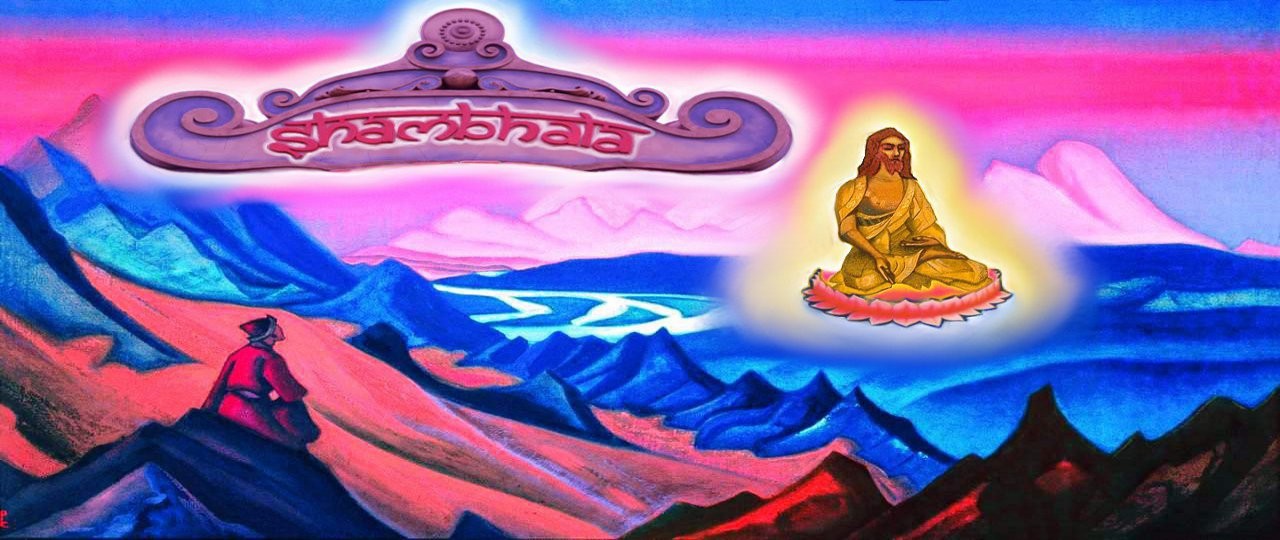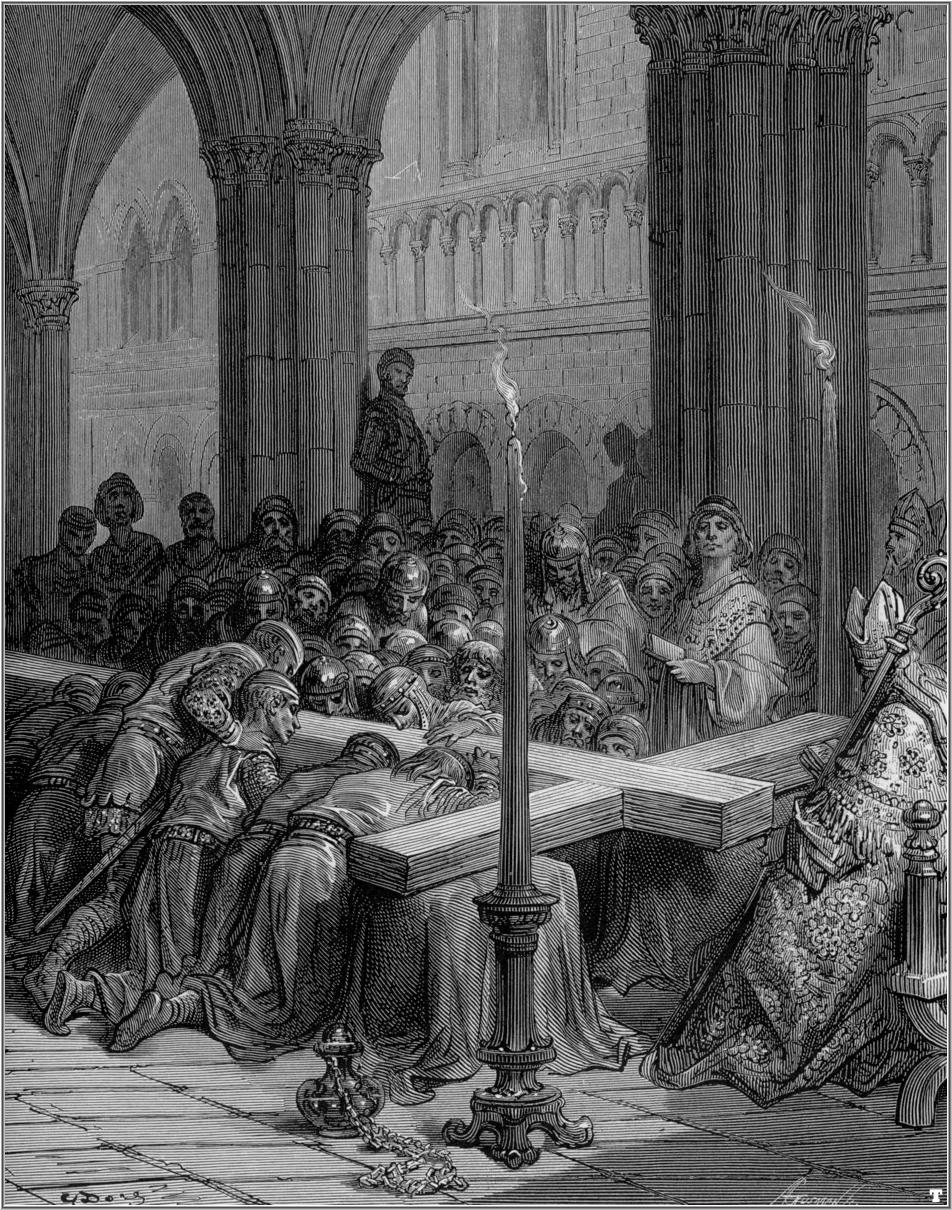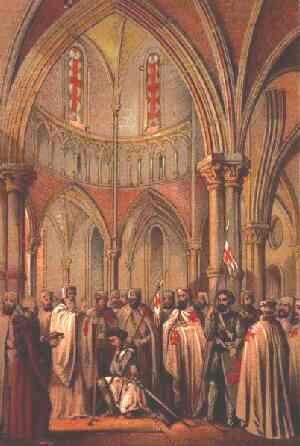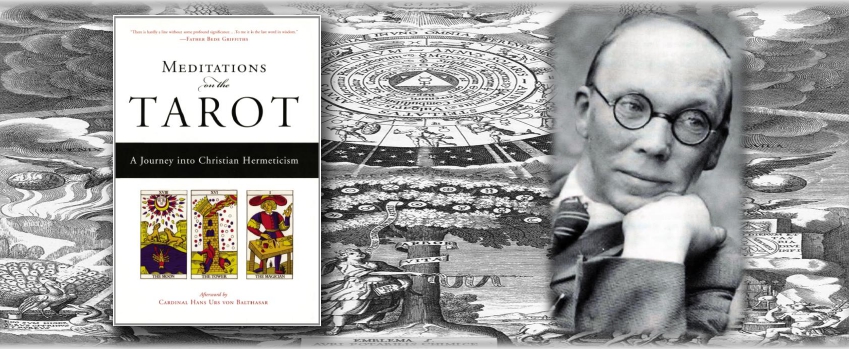Over the centuries, so much frivolous fantasy and fabrication has grown up around the Knights Templar which disregards the obvious fact that they were a Christian militaristic order—established and sanctioned by the Catholic Church—that was instituted in medieval times to protect pilgrims journeying to the Holy Lands. They were not a secret occult brotherhood that later morphed into Freemasonry in Scotland and elsewhere.
In an effort to provide some historical clarity on the Templars from an esoteric Christian perspective, the following article has been excerpted from my previously published book, The Son of Love and the Birth of the New Mysteries (2015), which is available from Amazon.com.

[“The Discovery of the True Cross” by Gustave Dore (1877)]
The Riddle of the Knights Templar
It is worth clarifying, at this point, the ever-popular misconception that the Knights Templar also functioned as an important esoteric conduit into medieval Europe for the vanishing mysteries of the ancient Middle East. As a Christian, monastic, military order officially endorsed by the Catholic Church at the Council of Troyes in 1129, the Templar mission was to provide protection to European pilgrims travelling at that time to Jerusalem and to the Holy Land. Templar knights were required to take the monastic vows of poverty, chastity, piety and obedience, and to strictly adhere to a detailed code of conduct known as the “Latin Rule” which was established by advocate St. Bernard of Clairvaux and founder Hugues de Payens.
Though the Templars certainly came into armed contact with militant Moslem brotherhoods such as the Order of Assassins, as a fervent and dedicated Christian order, they had no interest in becoming a secret repository for old pagan mystery knowledge. However, since the Order’s headquarters in Jerusalem was the captured Al Aqsa Mosque on Temple Mount, which was believed to be the ancient site of King Solomon’s temple, it was later rumoured that the Templars may have unearthed long-forgotten secrets of Solomon, or the Hebrew Ark of the Covenant or the sacred chalice of Christ-Jesus’ Passover meal.
Moreover, the lurid accounts of Templar knights worshiping a heathen idol called “Baphomet” (a mistranslation of “Mahomet” = Muhammad), or engaging in acts of sexual depravity, or conducting ceremonial blasphemy against the crucifix was entirely fallacious information obtained from knights under horrific duress by King Philip IV of France. The sinister king of France was heavily indebted to the Templar Order to help finance a protracted war for control of the English monarchy; so to avoid repayment and to seize their communal wealth, Philip arrested, tortured and executed innocent Templar knights, including the grand master of the order, Jacques de Molay. Philip also falsely arrested and expelled Jewish citizens from French territories in order to seize their assets as well.
When King Philip began to levy unfair taxes against the French clergy in order to continue financing his costly war, he was soundly condemned by Pope Boniface VIII. Whereupon, Philip abducted the pope by surprise retaliation in Italy and installed his own puppet pope, Clement V, in Poitiers, France. Under pressure from King Philip, Pope Clement ordered all Christian monarchs in Europe to arrest the Templars and to seize their assets. Further military threats by Philip forced Clement to officially dissolve the order in 1312 and to turn over most of their remaining assets to the Knights of St. John (also known as the Knights of Malta or the Knights Hospitallers).
While some Templars certainly found safe haven in Scotland and Switzerland, which were outside the sphere of papal influence at this time since both territories had been previously excommunicated, many knights simply joined other orders, particularly the equally powerful Order of St. John. The Templar Order in Portugal continued to survive with the assistance of King Denis by simply changing its name and re-instituting as the Military Order of Christ. Some Templars in other countries were arrested and tried, but never convicted. Some knights were even pensioned off and left to retire peacefully. Remarkably, a misplaced document was found in the Vatican Secret Archives in 2002 that records the trial of the Templars and the fact that before dissolving the order in 1312, Pope Clement in 1308 actually absolved the accused Templars of all heresies against them. Unfortunately, that did not prevent the corrupt Philip IV from burning alive at the stake Grand Master de Molay and Normandy Master de Charney in Paris on March 19, 1314.
Templars and Freemasonry
So any modern-day orders, particularly Masonic, claiming to have a Templar connection are clearly spurious. The Templars were a Catholic monastic order established in the Middle Ages to provide military protection for Christian pilgrims to the Holy Lands. This once-essential service is no longer required, and since the Order has been officially dissolved in its original form by the Church, there are no recognized Templar knights remaining today. Without official Catholic approval, any group or individual claiming to be Templar is simply bogus. Moreover, it would be interesting to know if any of these Masonic would-be Templars take strict monastic vows of poverty, chastity, piety and obedience; or faithfully abide by the 72 instructions of the Latin Rule.
Though some Masonic legends claim that Freemasonry was actually started by exiled Templars or that persecuted Templars took safety within certain Masonic orders (in Scotland, for example), such conjecture makes no logical sense whatsoever. Firstly, feudal brotherhoods of stonemasons were in existence long before the Order of Templars was endorsed by the Church in 1129; so the Templars certainly didn’t establish Freemasonry. Secondly, while it is possible that desperate Templars could have temporarily hidden out in the guarded lodges of stonemasons, it is more likely that as Christian warrior-monks they would have sought refuge in any number of sympathetic monastic orders in Europe at the time.
The idea, however, that there was close contact between Templars and stonemasons is certainly logical. Since the Templars established a network of stone temples, castles and fortifications stretching from Britain to Jerusalem, they obviously would have employed an army of talented stonemasons to do the necessary construction. But since one was a military monastic order and the other was a practicing guild of tradesmen, their only commonality was their Christian faith and loyalty to the Holy Church.
The only reason that de-Christianized Freemasonry includes degrees and orders of pseudo-Templarism is the mistaken mystique that the Templars were not dedicated and devout Christian military monks but deceitful purveyors and practitioners of ancient pagan mysteries. Since modern Freemasonry cloaks itself in secrecy and deceit, it quite naturally looks for these qualities in other brotherhoods.
Templars and the Holy Grail
The truth is that the Templars did uncover and safeguard certain sacred treasures that had been acquired in the Middle East; but these were sacred relics associated with Christianity, not fragments of old pagan mystery knowledge. The Templars were documented to have possessed a piece of the true wooden cross of Christ. Also, the mummified head that the Templars were falsely accused of worshiping was actually a relic that the Order was known to possess, the head of St. Euphemia of Chalcedon. Also, the recorded “confessions” of the tortured knights in Paris makes mention of the Order possessing a red, monochromatic, full-length image of a man on linen or cotton cloth. This was clearly a reference to the famous Shroud of Turin, since the first known public display of the shroud in 1357 was by the family of the grandson of Geoffrey de Charney, the unfortunate Templar who was burned at the stake with Grand Master de Molay in 1314.
On a much deeper esoteric level, the Templars did indeed unknowingly stumble across an essential aspect of the mystery of the Holy Grail. Through their intense devotion and enthusiastic fervour as faithful servants of Christ-Jesus, Templar knights were to passionately feel that their entire lives had been turned over to the Risen Saviour. When they thought, it was Christ-Jesus thinking in them; when they felt, it was Christ-Jesus feeling in them; when they acted, it was Christ-Jesus acting through them. Every breath they took was intimately felt to be Christ-Jesus breathing in them; the beating of their heart and the coursing of blood through their veins was experienced as the life of Christ-Jesus in their bodies. As described by Rudolf Steiner in a lecture on 2 October 1916:
The blood of the Templars belonged to Christ Jesus―each one of them knew this. Their blood belonged to nothing else on earth than to Christ Jesus. Every moment of their life was to be filled with the perpetual consciousness of how in their own soul there dwelt―in the words of St. Paul―”not I, but Christ in me”! And in bloody and severe combat, in devoted work such as the Crusades demanded, the Templars put into practice what they had spiritually undertaken to do … to establish more firmly in earth existence the impulse which came from the Mystery of Golgotha. (Published in The Knights Templar: The Mystery of the Warrior Monks; 2011)
By mystically uniting their own blood with the spiritualized blood of the resurrected Saviour in the etheric sphere of the earth, the Knights Templar inadvertently experienced a form of Christian initiation whereby they contacted the real presence of Christ-Jesus in the supernatural realm. By uniquely experiencing the “sangréal” (Spanish for ‘royal blood’) of Christ―the “san gréal” or ‘Holy Grail’―the Templar initiates actually reflected the egohood of Christ-Jesus in their souls; thereby releasing true supernatural light into the world. Once again, as described by Rudolf Steiner:
Something quite remarkable and powerful had thus entered into the circle of the Templar Order without their having known the rules of Christian initiation other than through sacrificial service … This experience of the Templars meant that the Mystery of Golgotha was understood, and also experienced, at a higher stage than before. Something was now present in the world with regard to the Mystery of Golgotha which was previously not there … These external deeds and the enthusiasm that lived in these deeds drew out the souls of the Templars so that these souls, being separated from the body, outside the body, lived with the spiritual progress of humanity and penetrated in soul and spirit the secrets of the Mystery of Golgotha. They then underwent many and deep experiences, and not for the individual soul alone but for all humanity. (Ibid.)
Tragically, however, in spite of its grandeur and sublimity, the unintentional and spontaneously generated initiation of the Templars caused them to become anomalies in progressive human development. Their accelerated esoteric advancement placed them outside the stream of exoteric Christianity to which they properly belonged; but their connection to the medieval Roman Catholic Church excluded them from the normal stream of esoteric Christianity as well.
The Templars, then, became a religious order without a spiritual home. Moreover, since their abnormally rapid attainment prematurely expanded their consciousness beyond the safe confines of the body, the Templars also unknowingly opened themselves to Luciferic assault. Due to his diabolic lust for gold and power, Philip IV became the eager agent of Luciferic powers who sought to destroy the Templars and thereby halt the influx of Christ-light that was pouring into the world through them.
Thankfully, in the great hall of cosmic justice, the cruelly-murdered Templar knights found fair and lawful recompense. Their premature deaths flooded the supernatural world closest to the earth with radiant Christ-light that illumined and inspired the Christian souls descending to birth into Renaissance Europe. Many an enlightened intellect during that period could trace the source of their brilliance to Jacques de Molay and to the Christ-filled Templars on the other side of the veil.

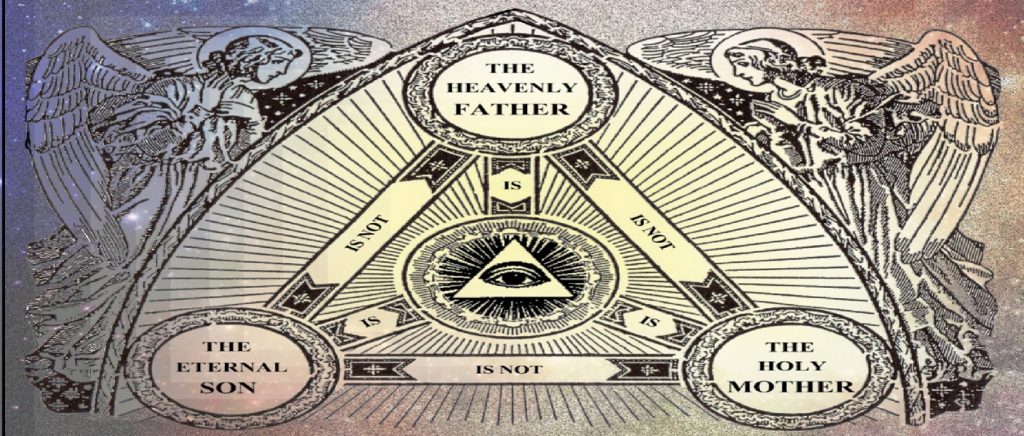 From what has been discussed thus far, it is obvious that esoteric science fully agrees with traditional Western theology that the One God is a perfect unity of three deific personifications―or simply, “three divine persons.” Furthermore, this “Trinity” of divine persons is agreed to be co-existent, co-equal and consubstantial with one another.
From what has been discussed thus far, it is obvious that esoteric science fully agrees with traditional Western theology that the One God is a perfect unity of three deific personifications―or simply, “three divine persons.” Furthermore, this “Trinity” of divine persons is agreed to be co-existent, co-equal and consubstantial with one another.